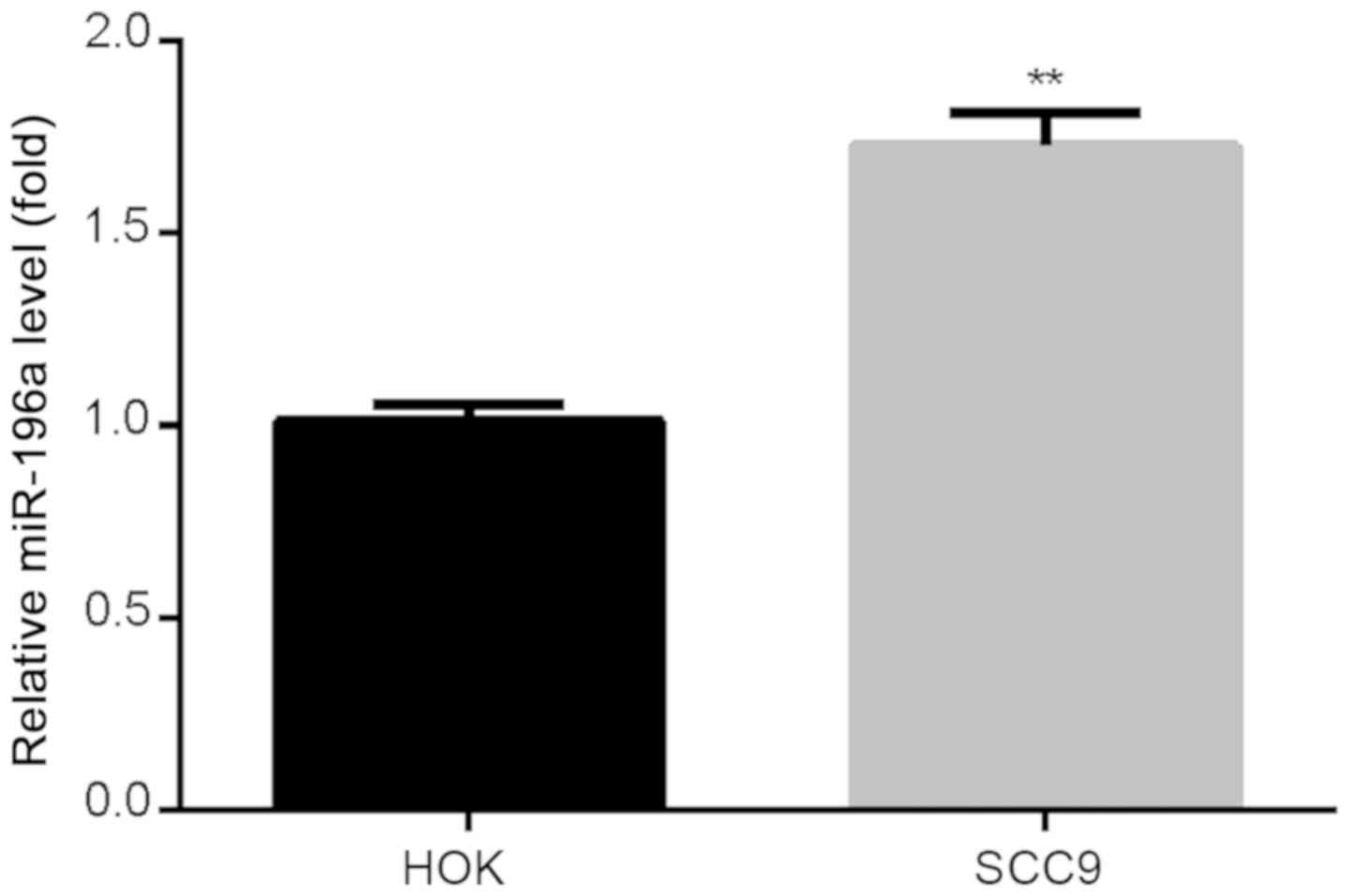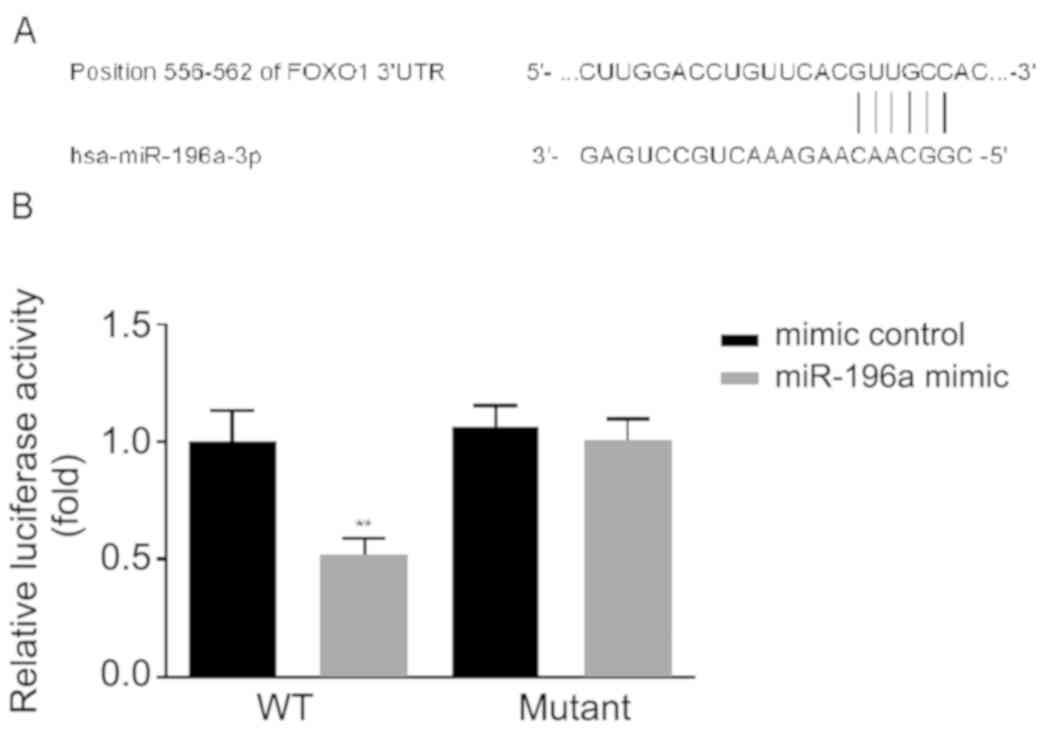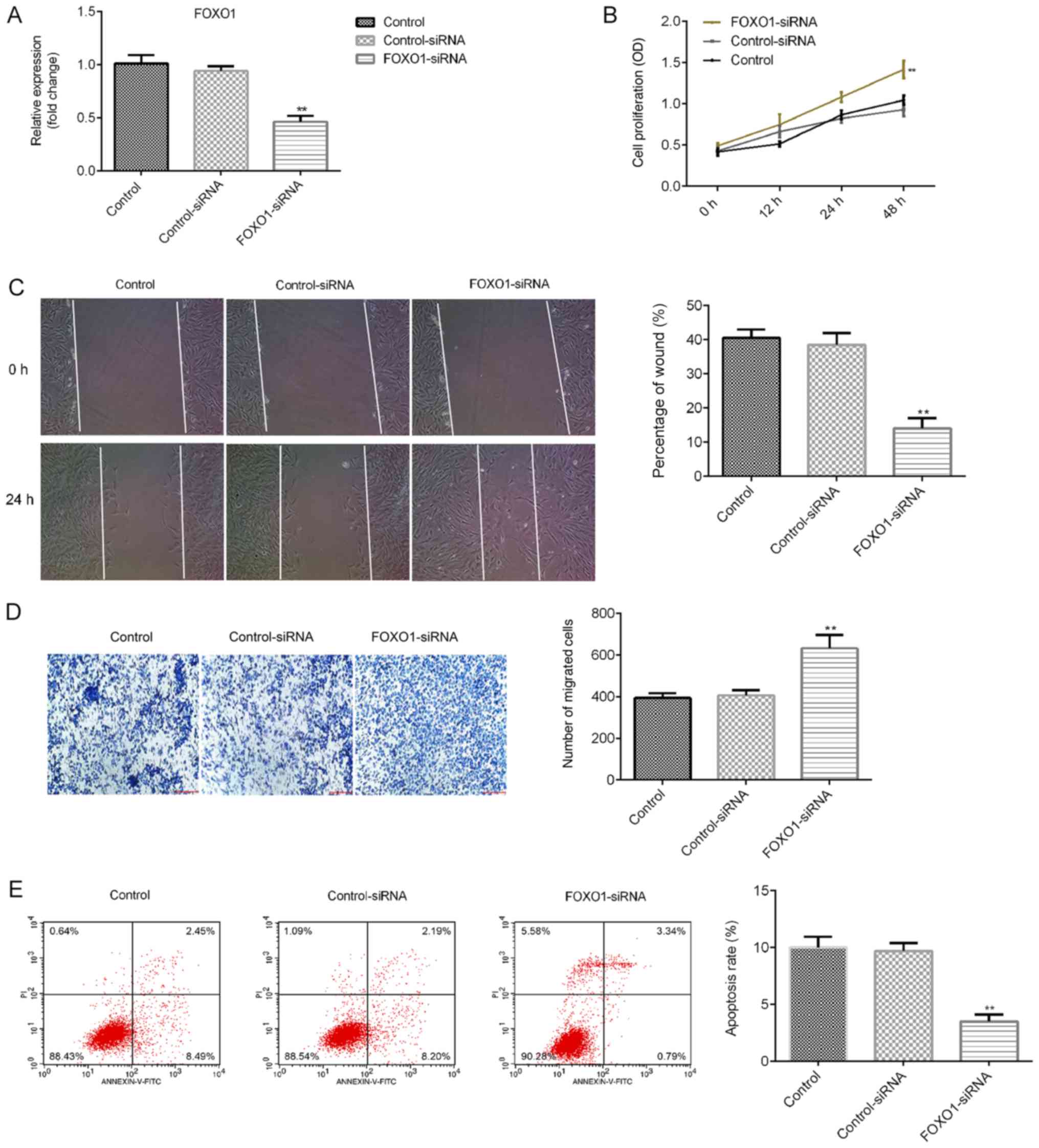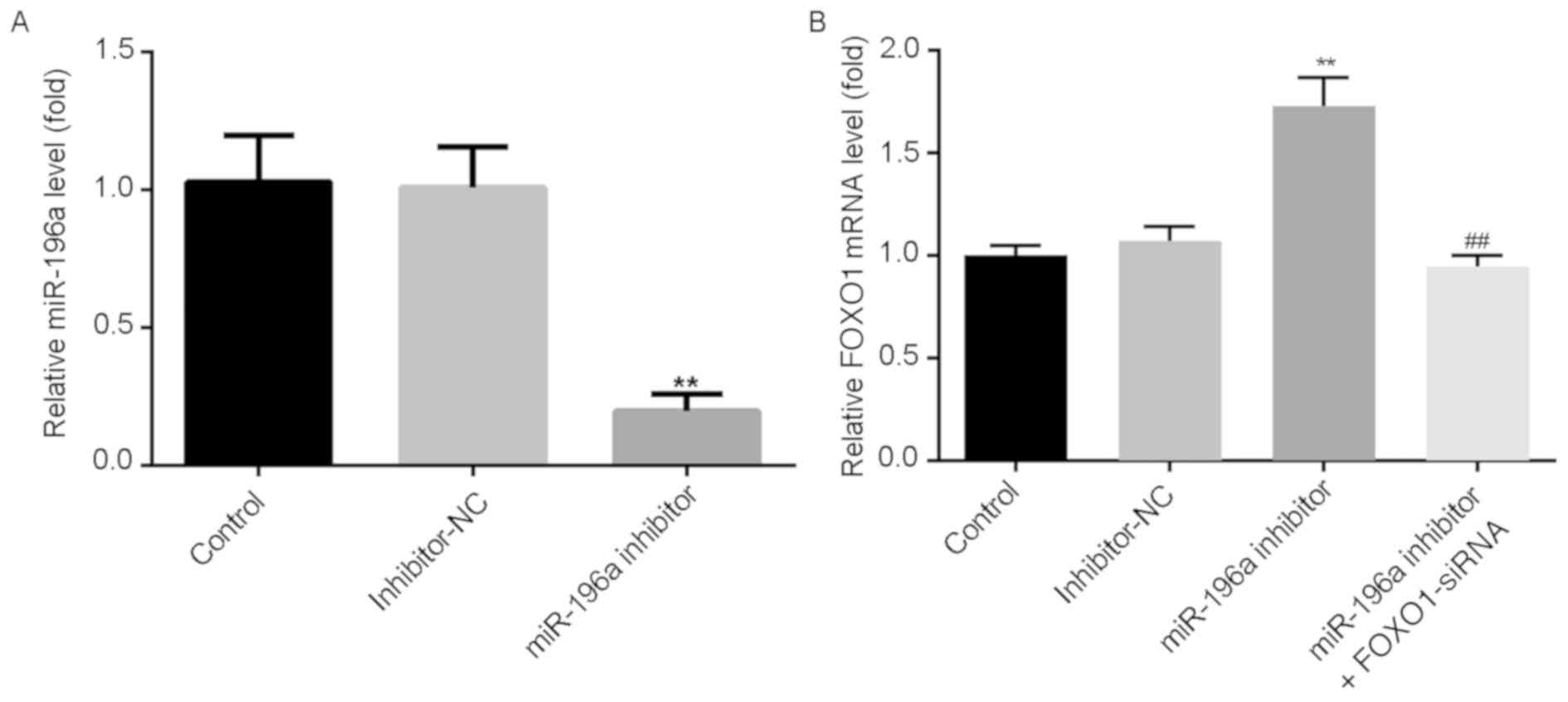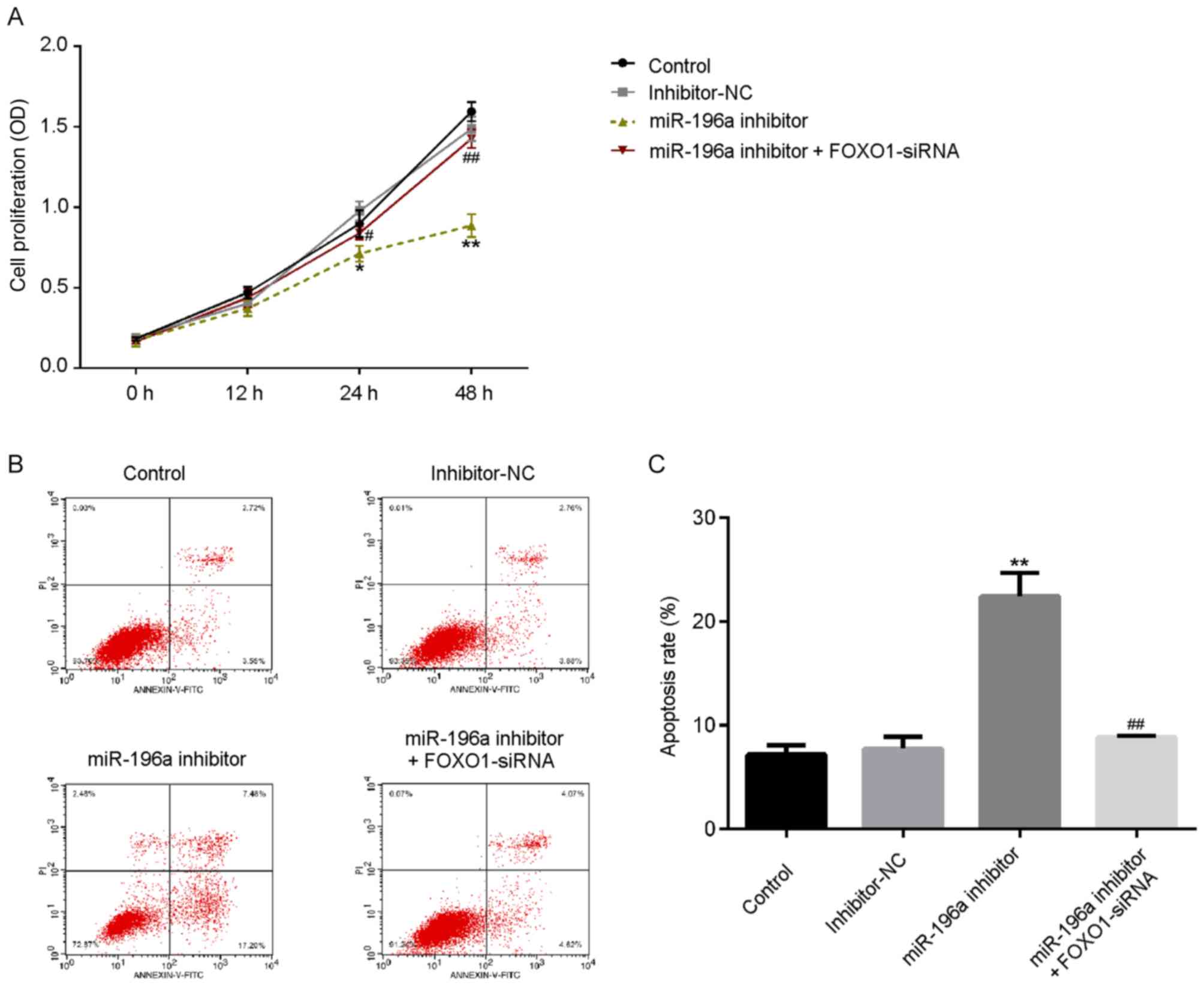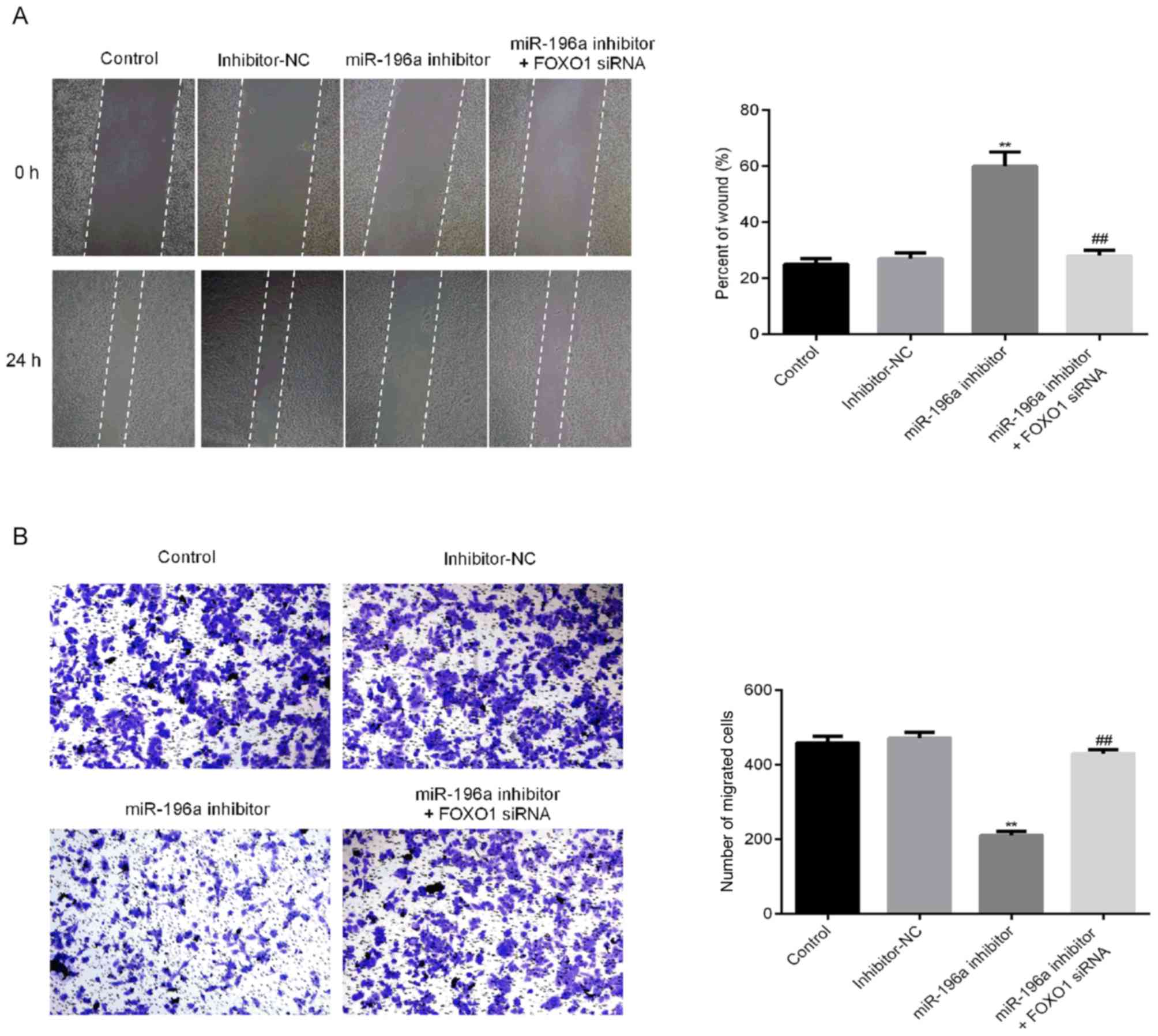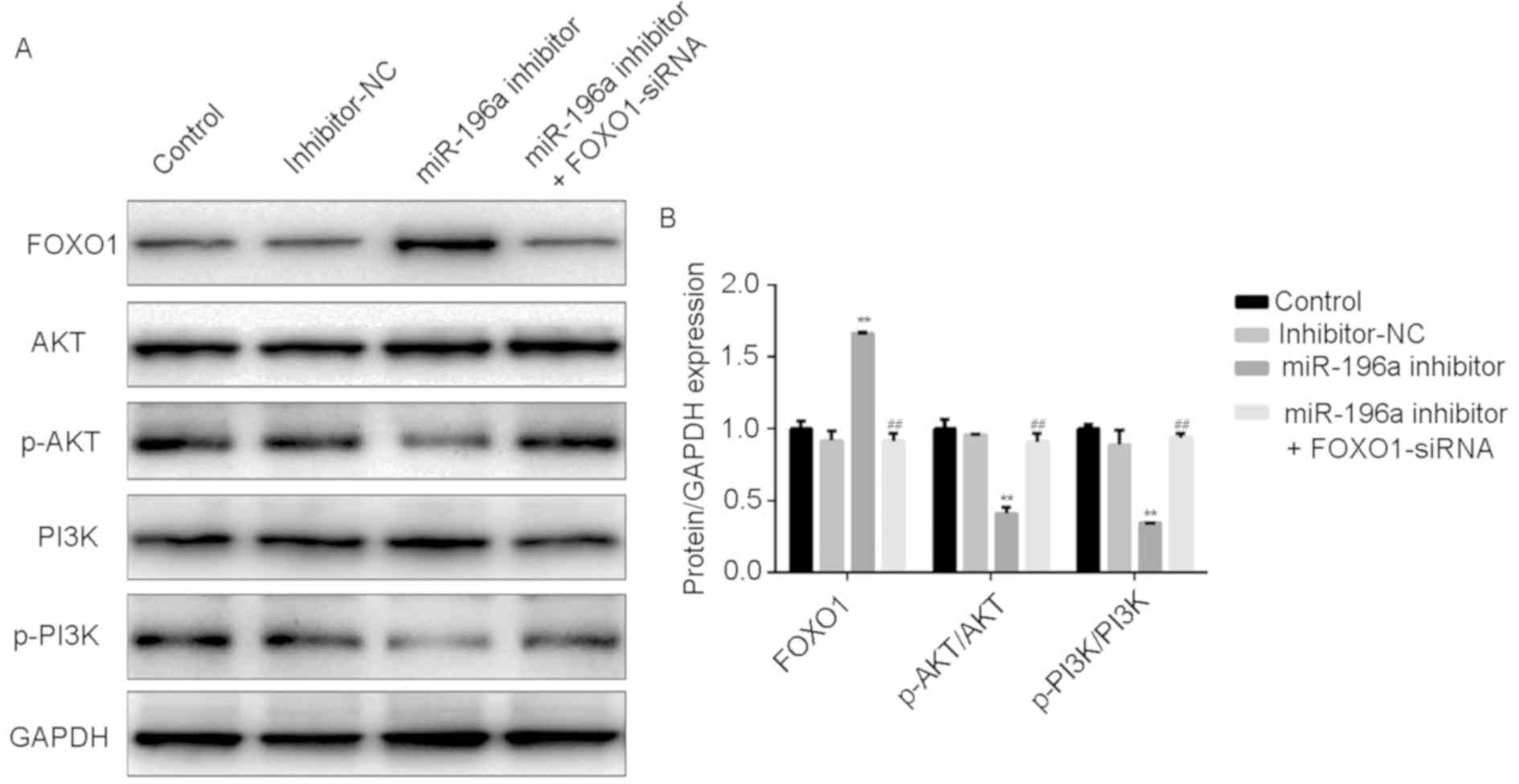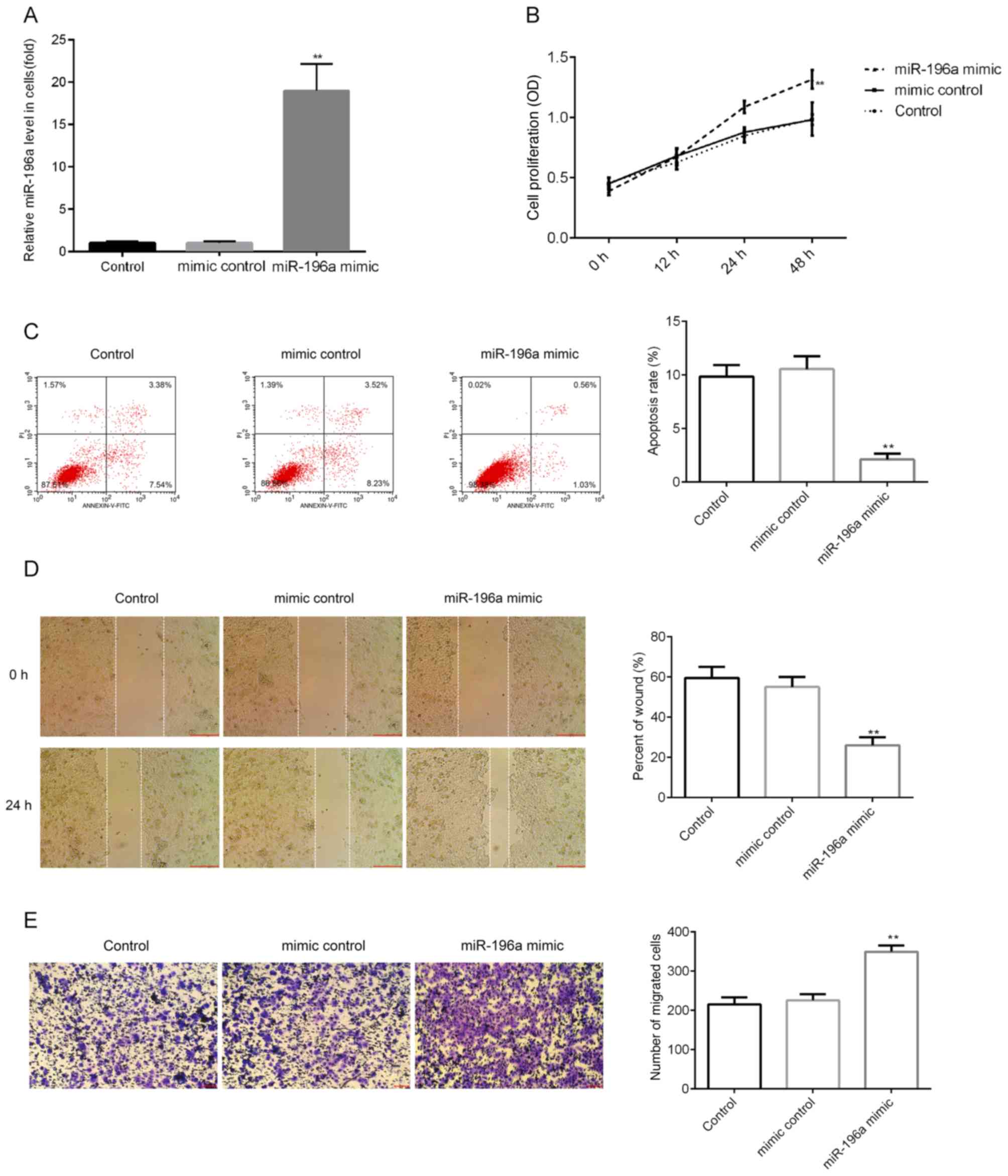|
1
|
Curado MP and Hashibe M: Recent changes in
the epidemiology of head and neck cancer. Curr Opin Oncol.
21:194–200. 2009.PubMed/NCBI View Article : Google Scholar
|
|
2
|
Warnakulasuriya S: Living with oral
cancer: Epidemiology with particular reference to prevalence and
life-style changes that influence survival. Oral Oncol. 46:407–410.
2010.PubMed/NCBI View Article : Google Scholar
|
|
3
|
Mascolo M, Siano M, Ilardi G, Russo D,
Merolla F, De Rosa G and Staibano S: Epigenetic disregulation in
oral cancer. Int J Mol Sci. 13:2331–2353. 2012.PubMed/NCBI View Article : Google Scholar
|
|
4
|
Sharma A, Mendez E, Yueh B, Lohavanichbutr
P, Houck J, Doody DR, Futran ND, Upton MP, Schwartz SM and Chen C:
Human papillomavirus-positive oral cavity and oropharyngeal cancer
patients do not have better quality-of-life trajectories.
Otolaryngol Head Neck Surg. 146:739–745. 2012.PubMed/NCBI View Article : Google Scholar
|
|
5
|
Reid A, Garrett E, Dibben C and Williamson
L: ‘A confession of ignorance’: Deaths from old age and deciphering
cause-of-death statistics in Scotland, 1855-1949. Hist Fam.
20:320–344. 2015.PubMed/NCBI View Article : Google Scholar
|
|
6
|
Wang Z and Cai H, Lin L, Tang M and Cai H:
Upregulated expression of microRNA-214 is linked to tumor
progression and adverse prognosis in pediatric osteosarcoma.
Pediatr Blood Cancer. 61:206–210. 2014.PubMed/NCBI View Article : Google Scholar
|
|
7
|
Farh KK, Grimson A, Jan C, Lewis BP,
Johnston WK, Lim LP, Burge CB and Bartel DP: The widespread impact
of mammalian MicroRNAs on mRNA repression and evolution. Science.
310:1817–1821. 2005.PubMed/NCBI View Article : Google Scholar
|
|
8
|
Nohata N, Hanazawa T, Kinoshita T, Okamoto
Y and Seki N: MicroRNAs function as tumor suppressors or oncogenes:
Aberrant expression of microRNAs in head and neck squamous cell
carcinoma. Auris Nasus Larynx. 40:143–149. 2013.PubMed/NCBI View Article : Google Scholar
|
|
9
|
Lamouille S, Subramanyam D, Blelloch R and
Derynck R: Regulation of epithelial-mesenchymal and
mesenchymal-epithelial transitions by microRNAs. Curr Opin Cell
Biol. 25:200–207. 2013.PubMed/NCBI View Article : Google Scholar
|
|
10
|
Ell B and Kang Y: MicroRNAs as regulators
of bone homeostasis and bone metastasis. Bonekey Rep.
3(549)2014.PubMed/NCBI View Article : Google Scholar
|
|
11
|
Ge J, Chen Z, Li R, Lu T and Xiao G:
Upregulation of microRNA-196a and microRNA-196b cooperatively
correlate with aggressive progression and unfavorable prognosis in
patients with colorectal cancer. Cancer Cell Int.
14(128)2014.PubMed/NCBI View Article : Google Scholar
|
|
12
|
Liu XH, Lu KH, Wang KM, Sun M, Zhang EB,
Yang JS, Yin DD, Liu ZL, Zhou J, Liu ZJ, et al: MicroRNA-196a
promotes non-small cell lung cancer cell proliferation and invasion
through targeting HOXA5. BMC Cancer. 12(348)2012.PubMed/NCBI View Article : Google Scholar
|
|
13
|
Tsai MM, Wang CS, Tsai CY, Chen CY, Chi
HC, Tseng YH, Chung PJ, Lin YH, Chung IH, Chen CY and Lin KH:
MicroRNA-196a/-196b promote cell metastasis via negative regulation
of radixin in human gastric cancer. Cancer Lett. 351:222–231.
2014.PubMed/NCBI View Article : Google Scholar
|
|
14
|
Zhang C, Yao C, Li H, Wang G and He X:
Combined elevation of microRNA-196a and microRNA-196b in sera
predicts unfavorable prognosis in patients with osteosarcomas. Int
J Mol Sci. 15:6544–6555. 2014.PubMed/NCBI View Article : Google Scholar
|
|
15
|
Guerriero I, D'Angelo D, Pallante P,
Santos M, Scrima M, Malanga D, De Marco C, Ravo M, Weisz A,
Laudanna , et al: Analysis of miRNA profiles identified
miR-196a asa crucial mediator of aberrant PI3K/AKT ignaling in lung
cancer cells. Oncotarget. 8:19172–19191. 2017.PubMed/NCBI View Article : Google Scholar
|
|
16
|
Yang L, Peng F, Qin J, Zhou H and Wang B:
Downregulation of microRNA-196a inhibits human liver cancer cell
proliferation and invasion by targeting FOXO1. Oncol Rep.
38:2148–2154. 2017.PubMed/NCBI View Article : Google Scholar
|
|
17
|
Hou T, Ou J, Zhao X, Huang X, Huang Y and
Zhang Y: MicroRNA-196a promotes cervical cancer proliferation
through the regulation of FOXO1 and p27Kip1. Br J Cancer.
110:1260–1268. 2014.PubMed/NCBI View Article : Google Scholar
|
|
18
|
Guo H, German P, Bai S, Barnes S, Guo W,
Qi X, Lou H, Liang J, Jonasch E, Mills GB and Ding Z: The PI3K/AKT
pathway and renal cell carcinoma. J Genet Genomics. 42:343–353.
2015.PubMed/NCBI View Article : Google Scholar
|
|
19
|
Gao Y, Ma C, Feng X, Liu Y and Haimiti X:
BF12, a novel benzofuran, exhibits anti-tumor activity by
inhibiting microtubules and the PI3K/Akt/mTOR signaling pathway in
human cervical cancer cells. Chem Biodivers: Jan 17, 2020 (Epub
ahead of print).
|
|
20
|
Sobočan M, Bračič S, Knez J, Takač I and
Haybaeck J: The Communication Between the PI3K/AKT/mTOR pathway and
Y-box binding protein-1 in gynecological cancer. Cancers (Basel).
12(E205)2020.PubMed/NCBI View Article : Google Scholar
|
|
21
|
An J, He H, Yao W, Shang Y, Jiang Y and Yu
Z: PI3K/Akt/FoxO pathway mediates glycolytic metabolism in HepG2
cells exposed to triclosan (TCS). Environ Int.
136(105428)2020.PubMed/NCBI View Article : Google Scholar
|
|
22
|
Nozhat Z, Mohammadi-Yeganeh S, Azizi F,
Zarkesh M and Hedayati M: Effects of metformin on the
PI3K/AKT/FOXO1 pathway in anaplastic thyroid Cancer cell lines.
Daru. 26:93–103. 2018.PubMed/NCBI View Article : Google Scholar
|
|
23
|
Zheng M, Cao MX, Yu XH, Li L, Wang K, Wang
SS, Wang HF, Tang YJ, Tang YL and Liang XH: STAT3 promotes invasion
and aerobic glycolysis of human oral squamous cell carcinoma via
inhibiting FoxO1. Front Oncol. 9(1175)2019.PubMed/NCBI View Article : Google Scholar
|
|
24
|
Gao C, Ren C, Liu Z, Zhang L, Tang R and
Li X: GAS5, a FoxO1-actived long noncoding RNA, promotes
propofol-induced oral squamous cell carcinoma apoptosis by
regulating the miR-1297-GSK3β axis. Artif Cells Nanomed Biotechnol.
47:3985–3993. 2019.PubMed/NCBI View Article : Google Scholar
|
|
25
|
Livak KJ and Schmittgen TD: Analysis of
relative gene expression data using real-time quantitative PCR and
the 2(-Delta Delta C(T)) method. Methods. 25:402–408.
2001.PubMed/NCBI View Article : Google Scholar
|
|
26
|
Steeg PS: Tumor metastasis: Mechanistic
insights and clinical challenges. Nat Med. 12:895–904.
2006.PubMed/NCBI View
Article : Google Scholar
|
|
27
|
Sharma M, Sah P, Sharma SS and
Radhakrishnan R: Molecular changes in invasive front of oral
cancer. J Oral Maxillofac Pathol. 17:240–247. 2013.PubMed/NCBI View Article : Google Scholar
|
|
28
|
Huang WC, Chan SH, Jang TH, Chang JW, Ko
YC, Yen TC, Chiang SL, Chiang WF, Shieh TY, Liao CT, et al:
MiRNA-491-5p and GIT1 serve as modulators and biomarkers for oral
squamous cell carcinoma invasion and metastasis. Cancer Res.
74:751–764. 2014.PubMed/NCBI View Article : Google Scholar
|
|
29
|
Nagai H, Hasegawa S, Uchida F, Terabe T,
Ishibashi Kanno N, Kato K, Yamagata K, Sakai S, Kawashiri S, Sato
H, et al: MicroRNA-205-5p suppresses the invasiveness of oral
squamous cell carcinoma by inhibiting TIMP2 expression. Int J
Oncol. 52:841–850. 2018.PubMed/NCBI View Article : Google Scholar
|
|
30
|
Feng X, Luo Q, Wang H, Zhang H and Chen F:
MicroRNA-22 suppresses cell proliferation, migration and invasion
in oral squamous cell carcinoma by targeting NLRP3. J Cell Physiol.
233:6705–6713. 2018.PubMed/NCBI View Article : Google Scholar
|















